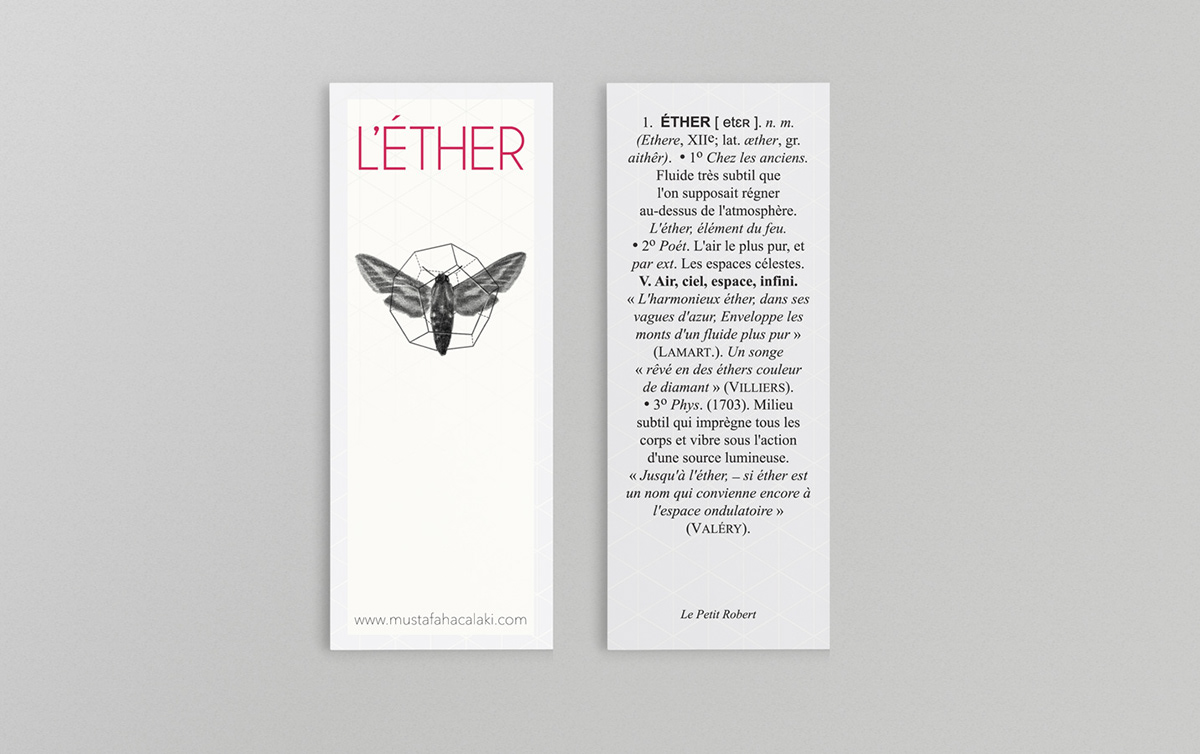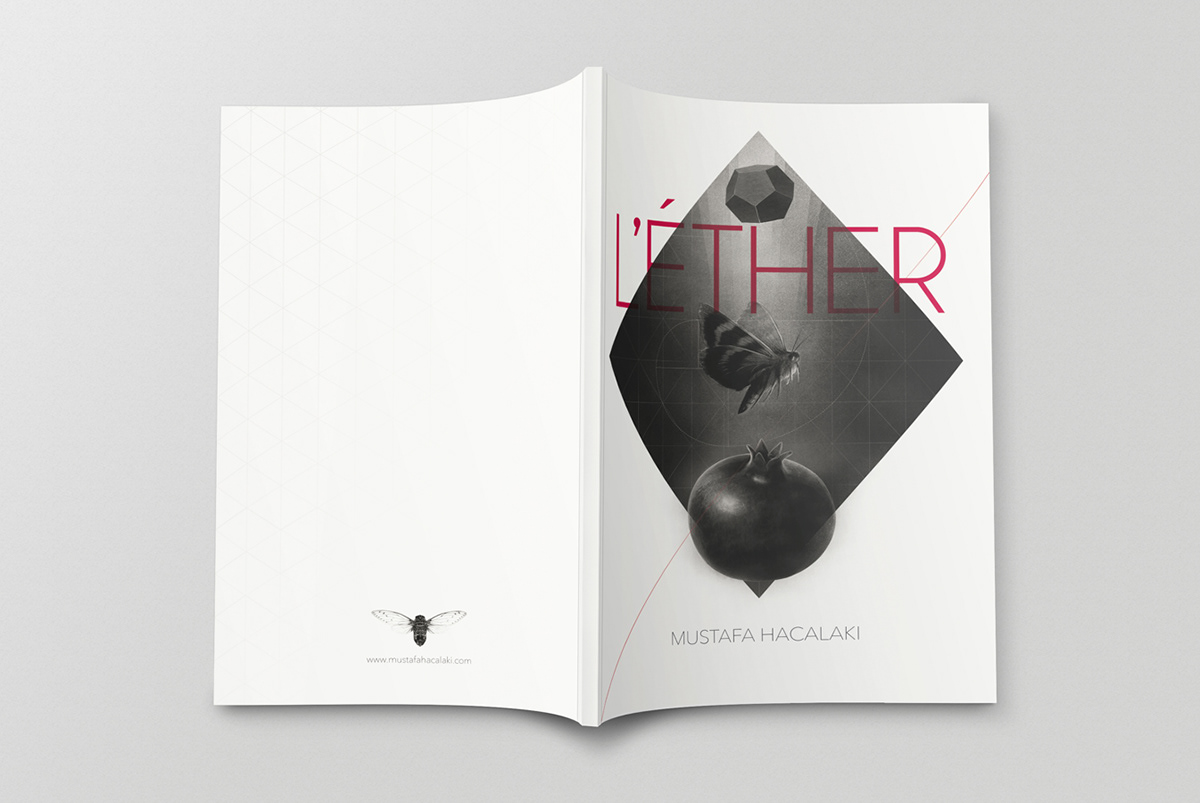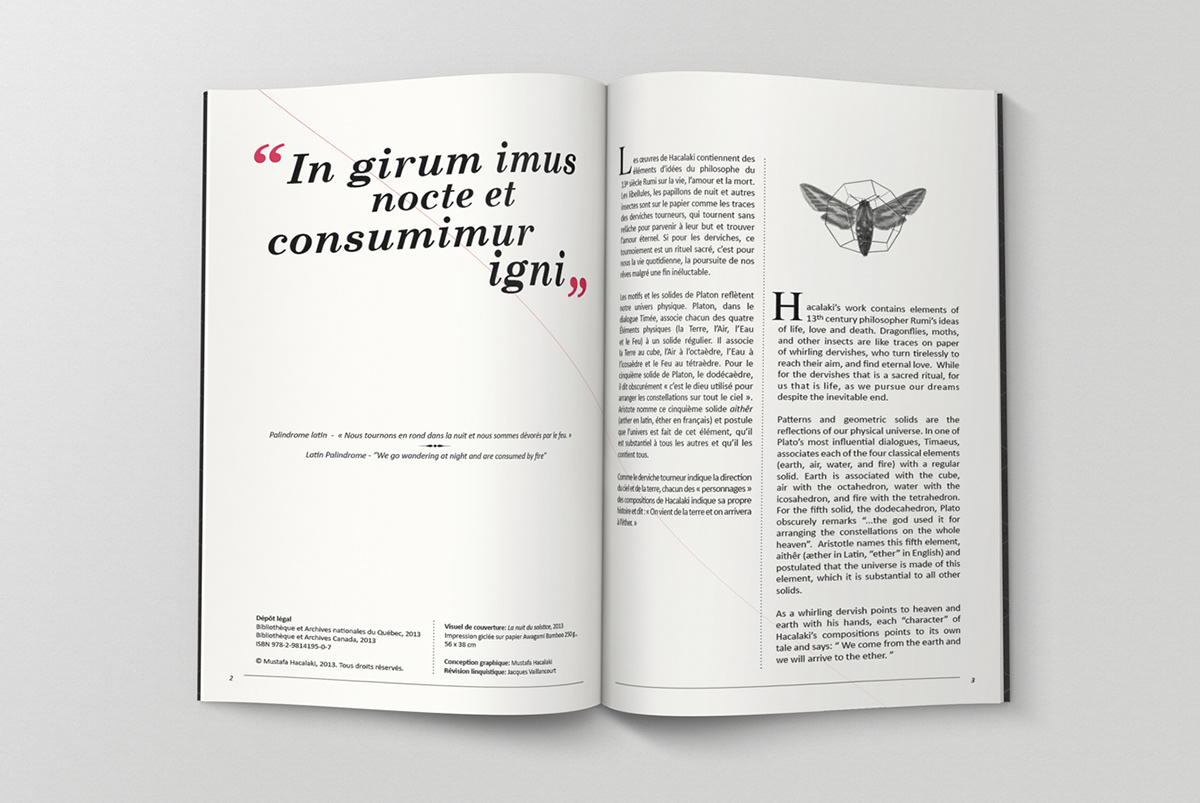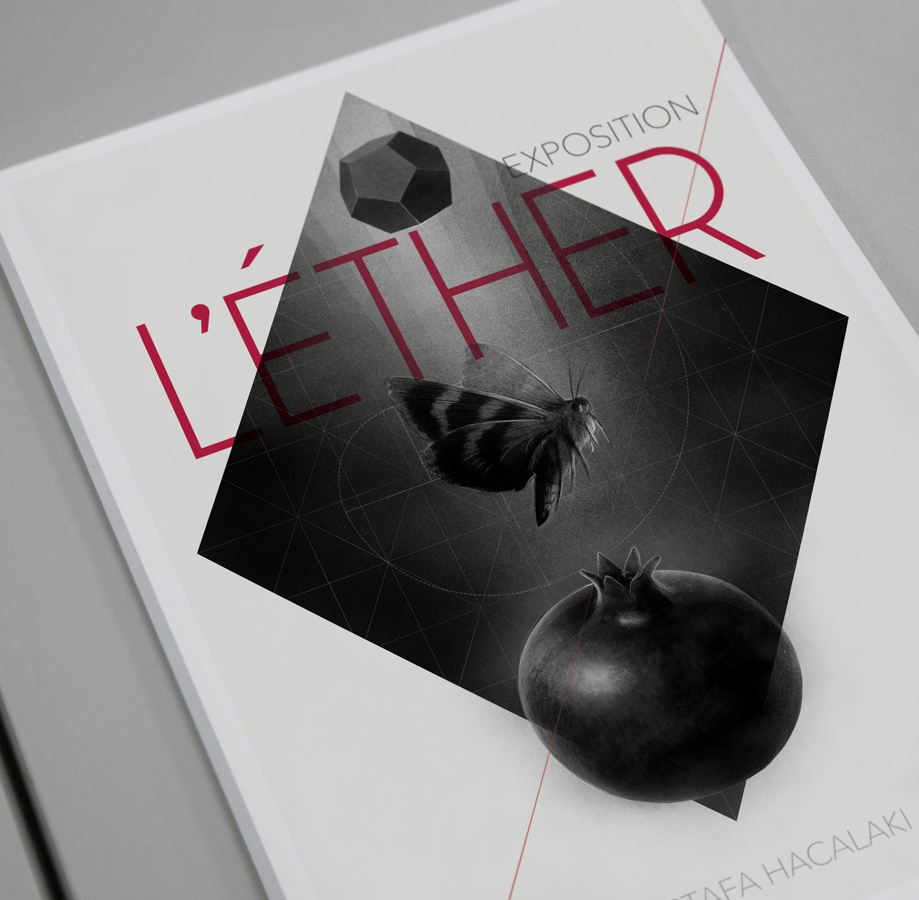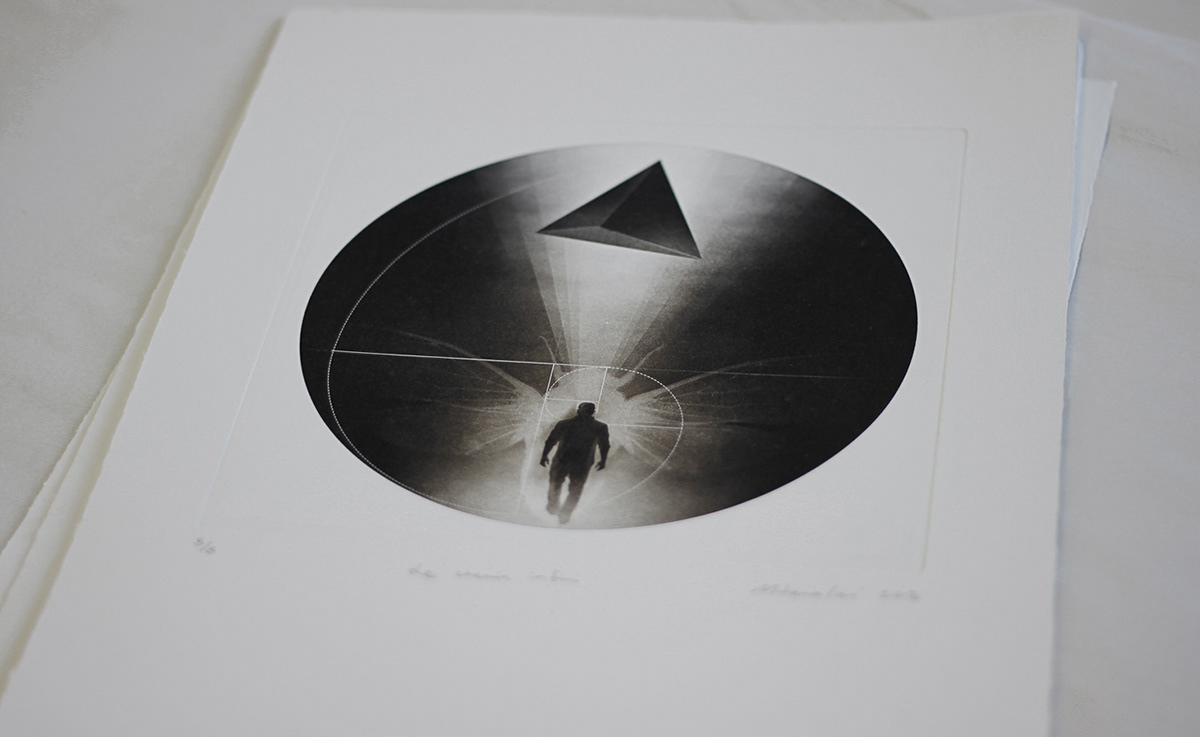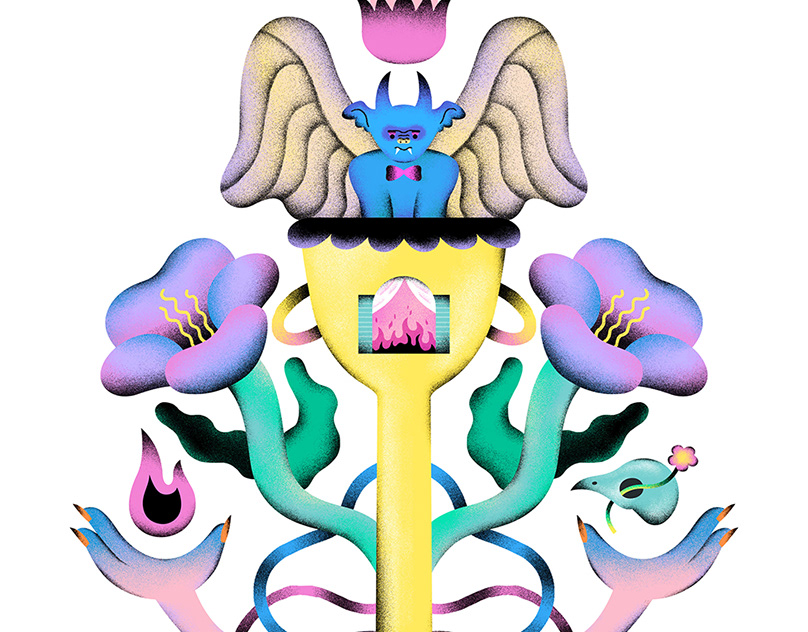

In girum imus nocte et consumimur igni*
*Latin Palindrome - “We go wandering at night and are consumed by fire”
Hacalaki’s work contains elements of 13th century philosopher Rumi’s ideas of life, love and death. Dragonflies, moths, and other insects are like traces on paper of whirling dervishes, who turn tirelessly to reach their aim, and find eternal love. While for the dervishes that is a sacred ritual, for us that is life, as we pursue our dreams despite the inevitable end.
Patterns and geometric solids are the reflections of our physical universe. In one of Plato’s most influential dialogues, Timaeus, associates each of the four classical elements (earth, air, water, and fire) with a regular solid. Earth is associated with the cube, air with the octahedron, water with the icosahedron, and fire with the tetrahedron. For the fifth solid, the dodecahedron, Plato obscurely remarks “...the god used it for arranging the constellations on the whole heaven”. Aristotle names this fifth element, aithêr (æther in Latin, “ether” in English) and postulated that the universe is made of this element, which it is substantial to all other solids.
As a whirling dervish points to heaven and earth with his hands, each “character” of Hacalaki’s compositions points to its own tale and says: “ We come from the earth and we will arrive to the ether. ”


